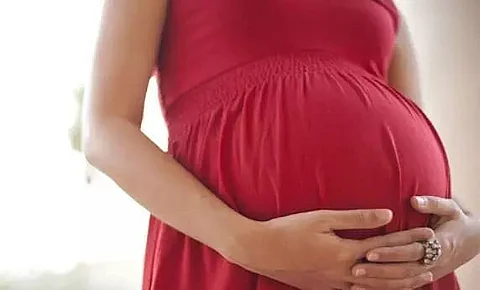
- Home
- Live Blog
- Breaking News
- Top Headlines
- Cities
- NE News
- Sentinel Media
- Sports
- Education
- Jobs

Reduction of maternal mortality being a key goal of the Reproductive and Child Health Programme (RCHP), the special bulletin released by the office of the Registrar General of India on 'Maternal Mortality in India' for the period 2018-2020 is an important reference for states for setting new targets. The estimates show significant decline in the Maternal Mortality Ratio (MMR) in the country to 97 per lakh live births during 2018-2020 from 103 in 2017-19 and 130 in 2014-16. Despite reflecting the national trend of progressive decline, Assam continues to be the state with the highest MMR of 195, which also speaks volumes about the challenges it need to overcome. The steady decline in MMR to 195 from 237 in 2014-16, and 215 in 2016-18 is reflective of the progress made in the state's health sector, including improvement in implementation in RCHP. With Kerala accounting for the lowest MMR of 19 among all states, Assam setting ambitious targets for all schemes and programmes that are aimed at bringing down maternal mortality will be crucial for achieving desired goals. The immediate target for the state is to catch up with eight states -Kerala, Maharashtra, Telangana, Andhra Pradesh, Tamil Nadu, Jharkhand, Gujarat and Karnataka - which have brought down MMR to less than the Sustainable Development Goal (SDG) target. Global SDG target for MMR is to reduce it to 70 per lakh live births by 2030 and number of states already achieving this target increasing from six to eight says a lot about the progress made in respect of maternal health. Persistent decline of MMR in India shows that the country is on track towards achieving the global SDG target, but performance of states like Assam will determine the overall pace of progress. The special bulletin also indicates that India has improved beyond the MMR target under National Health Policy of 100 per lakh live births. Apart from MMR, knowing two other indicators - Maternal Mortality Rate which is calculated as maternal deaths to women in the age group 15-49 years per lakh of women in that age group and the life-time risk which is defined as the probability that at least one women of reproductive age (15-49 years) will die due to childbirth is crucial to understand the comprehensive profile of maternal mortality of states and the country. Assam's Maternal Mortality Rate estimated at 12.1 is more than double the national average of 6, but less than 15.3 in Madhya Pradesh and 14.3 in Uttar Pradesh, while lifetime risk is estimated at 0.42 per cent compared to national average of 0.21 per cent. Kerala accounts for the lowest lifetime risk of just 0.03 per cent followed Andhra Pradesh with 0.08 per cent and Tamil Nadu with 0.06 per cent which sets the desired goal for Assam as it aims to be among top five states in the country. The estimates for the period 2021-23 is expected to reveal the ground realities of access to healthcare services and MMR intervention and whether disruption caused by health emergencies such as the Covid-19 pandemic could significantly impact the progress made and what lessons are to be learnt from the new realities. The major priority set in Operational Guideline, Maternal Health of the National Health Mission, Assam for financial years 2022-24 is identification, listing and follow-up of high-risk pregnancies in which either the mother or the foetus has risk of death or disability as a consequence of one or more conditions that complicate the normal pregnancy. Haemorrhage, sepsis, unsafe abortion, and hypertensive disorders anaemia are some of the major causes of maternal deaths. Early identification and intervention of high-risk pregnancies increase the chances of delivering full-term, healthy babies and good health of the mother, it notes, and lays emphasis on 100 per cent reporting and reviewing of all maternal death cases. Judicious utilization of health sector grants awarded by the 15th Finance Commission, Pradhan Mantri Ayushman Bharat Health Infrastructure Mission fund can help improve health infrastructure needed for maternal healthcare and emergency critical care in high-risk pregnancy cases. Health infrastructures lacking adequate human resources in the state, is a difficult area. Besides, NHM policy guidelines states that human resources for health should only be engaged when infrastructure, procurement of equipment etc., required to operationalize the facility of services, are in place. This policy poses an impediment as delay in creation of health infrastructure and procurement of equipment due to multiple factors further delays human resource engagement and services which could have been provided by them from existing or temporary facilities. Proportionate allocation of fund, timely utilization, empowerment of women will go a long way in addressing the gaps. The state identifying villages, blocks and districts lacking required health infrastructure and skilled health professionals is essential to ensure access of women to antenatal care in pregnancy, skilled care during childbirth, and care and support in the weeks after childbirth and planning a better roadmap for lowering MMR.